Securing your belongings in a storage unit is essential to ensure their safety and peace of mind. Whether you’re storing seasonal items, valuable possessions, or business inventory, knowing how to properly lock a storage unit can prevent theft and unauthorized access.
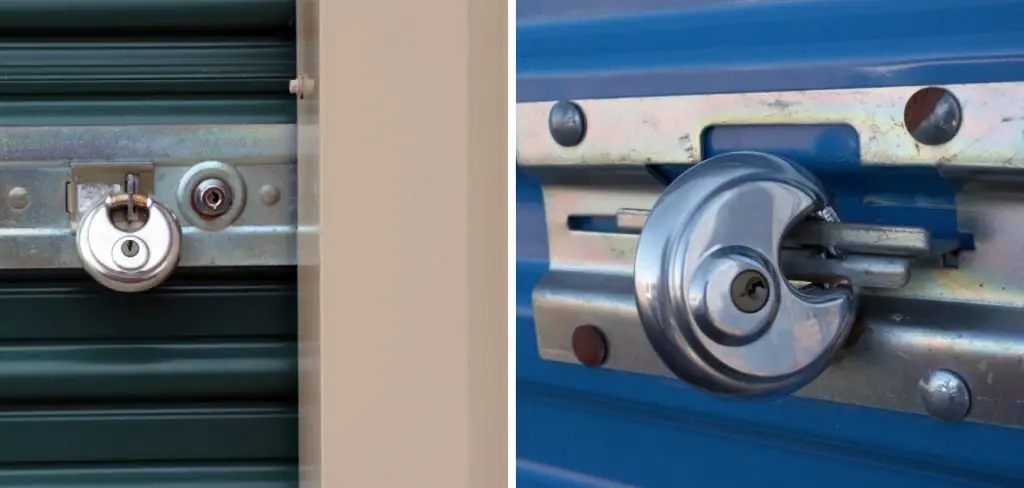
This guide on how to lock storage unit will walk you through the necessary steps to effectively lock your storage unit, highlighting the best practices and types of locks that offer optimal security.
What is a Storage Unit?
A storage unit is a rented space used to store personal or commercial belongings. These units vary in size, with some as small as a closet and others large enough to accommodate vehicles. They are typically located in self-storage facilities that offer added security features such as gated entry, surveillance cameras, and on-site personnel.
You can rent a storage unit for short or long-term periods, making it convenient for temporary storage needs or when relocating to a new place. While these facilities offer security measures, it’s essential to take extra precautions by properly locking your storage unit.
Why is Locking Your Storage Unit Important?
Locking your storage unit is crucial because it provides an additional layer of protection against theft and unauthorized access. While most storage facilities have security measures in place, such as gates and cameras, it’s ultimately up to you to secure your individual unit.
Moreover, proper locking techniques can prevent damage to your stored items caused by external factors like weather or pests. It also ensures that you can easily access your belongings without any complications or delays.
It’s essential to note that storage unit theft is not uncommon, making it crucial to take the necessary precautions to secure your unit and its contents.
10 Steps on How to Lock Storage Unit
Here are the steps to follow when locking a storage unit:
Step 1: Choose the Right Type of Lock
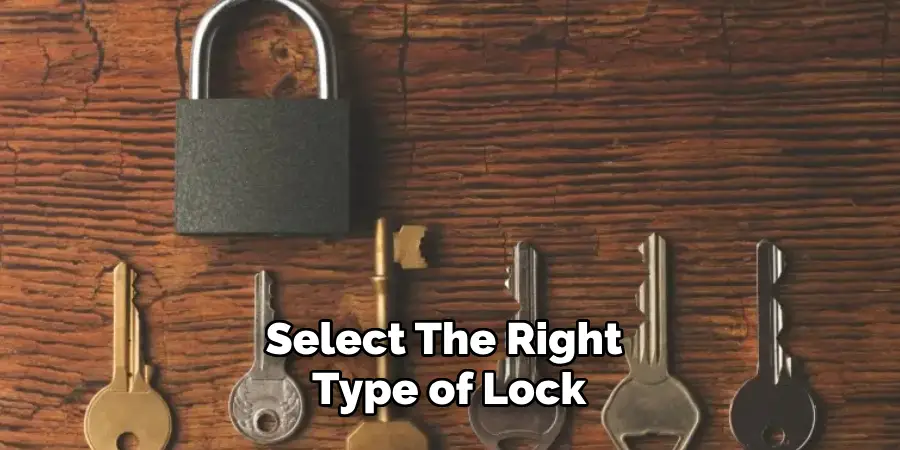
The first step is to Select the Right Type of Lock for your storage unit. The most common options include padlocks, combination locks, and disc locks. Each has its advantages and disadvantages in terms of security and ease of use.
For example, padlocks are affordable but can be easily cut with bolt cutters, while disc locks offer superior strength but may be more challenging to open if you forget the combination.
Step 2: Inspect the Unit
Before you lock your storage unit, it’s crucial to thoroughly inspect the unit itself. Check the door, walls, and ceiling for any signs of damage or weak spots that could be potential entry points for thieves or pests.
Ensure that the door closes securely and that the latch mechanism is functioning correctly. If you notice any issues, report them to the storage facility management immediately and request repairs or a different unit if necessary.
A well-maintained unit provides a solid foundation for your lock to offer its maximum protection.
Step 3: Clean the Unit
Before placing your belongings into the storage unit, it’s important to clean the space thoroughly. Start by sweeping out any dirt, dust, or debris from the floor to ensure a clean environment for your items.
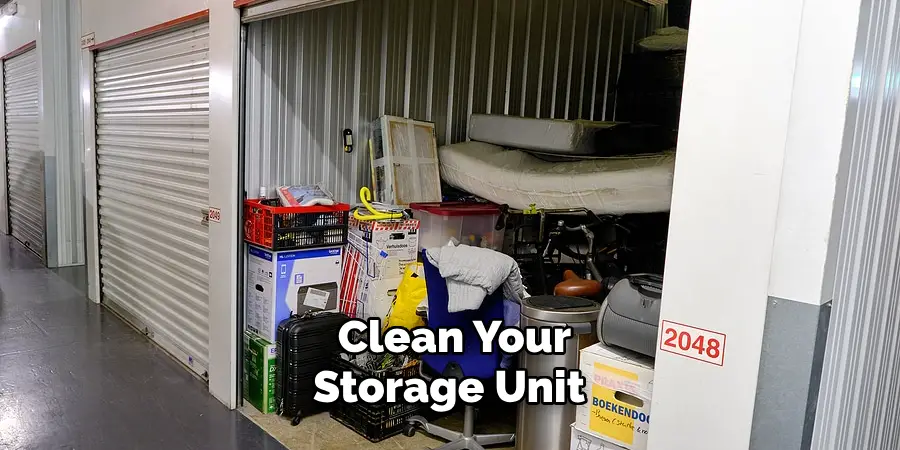
Wipe down the walls and any other surfaces to remove cobwebs and dirt. This will not only help maintain the condition of your stored items but also reduce the risk of attracting pests. Taking the time to clean your storage unit will provide a fresher and more secure space for your belongings, contributing to their long-term preservation.
Step 4: Organize Your Items
Before you start placing your belongings into the storage unit, it’s best to have a plan in place. This includes organizing your items based on size and weight to ensure they are stacked safely and securely. Place heavier items on the bottom and lighter ones on top to prevent any damage or accidents.
Use plastic bins or boxes to keep smaller items together and label them for easy identification when needed. An organized storage unit not only looks neater but also allows for easier access to specific items without causing disruptions to others.
Step 5: Utilize Shelving or Pallets
To maximize the space and improve the organization of your storage unit, consider utilizing shelving or pallets. Shelving units can help you make use of vertical space, allowing you to stack items safely without causing damage. Place frequently used or more valuable items on these shelves for easier access.
Pallets are another excellent option to keep your belongings off the ground, protecting them from any potential water damage that might occur on the floor. Both shelving and pallets will contribute to an organized, efficient, and secure storage setup, making it easier to find and retrieve items as needed.
Step 6: Cover Your Items
If you’re storing items that are susceptible to dust or moisture, it’s important to cover them properly. Use plastic sheets or tarps to protect your belongings from any potential damage caused by exposure to the elements. Make sure the covers are tightly secured and won’t slip off over time.
This step is particularly crucial if you plan on storing items for an extended period as it helps maintain their condition and prevents any unwanted surprises when you retrieve them.
Step 7: Lock the Unit at All Times
One of the most critical steps in locking a storage unit is ensuring that it remains locked at all times. It may seem obvious, but sometimes people forget to secure their units after visiting them, leaving their items vulnerable to theft.
Make a habit of checking that your unit is locked before leaving the facility, and never leave it unlocked while you’re away. Additionally, if you have multiple people accessing the storage unit, make sure everyone knows the importance of keeping it locked at all times.
Step 8: Check Your Lock Regularly
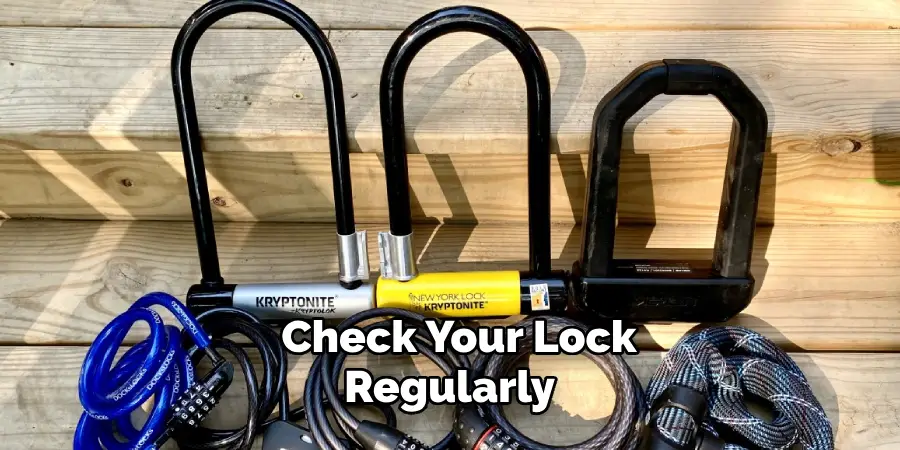
It’s essential to check your lock regularly for any signs of tampering or wear and tear. Look for any scratches or dents that could indicate an attempted break-in, and report them to the storage facility management immediately. If your lock is showing signs of rust or damage, consider replacing it with a new one for added security.
Step 9: Keep Spare Keys Secure
Having spare keys for your storage unit lock is a practical measure, but it’s vital to keep these keys secure. Avoid leaving spare keys in easily accessible or predictable places, such as under mats or in your vehicle. Instead, store them in a locked drawer, safe, or another secure location that only you or trusted individuals can access.
If you need to give a spare key to someone else, ensure they understand the importance of keeping it safe and returning it to you when no longer needed. Properly securing your spare keys will help prevent unauthorized access to your storage unit and protect your belongings.
Step 10: Maintain Communication with Storage Facility Management
Last but not least, it’s crucial to maintain open communication with the storage facility management. If you have any concerns or notice any issues with your unit or lock, report them immediately.
The management team is responsible for ensuring the security and maintenance of the storage facility, so they should be notified of any potential problems as soon as possible. By keeping in touch with them, you can ensure that your belongings are always safe and secure in your storage unit.
Following these steps on how to lock storage unit will help ensure the security and preservation of your stored belongings. With proper preparation, organization, and maintenance, you can have peace of mind knowing that your items are safe in your storage unit.
Remember to regularly check on your unit and communicate any concerns with the storage facility management for a worry-free storage experience. Happy storing!
Additional Tips
Use Climate-Controlled Units for Sensitive Items
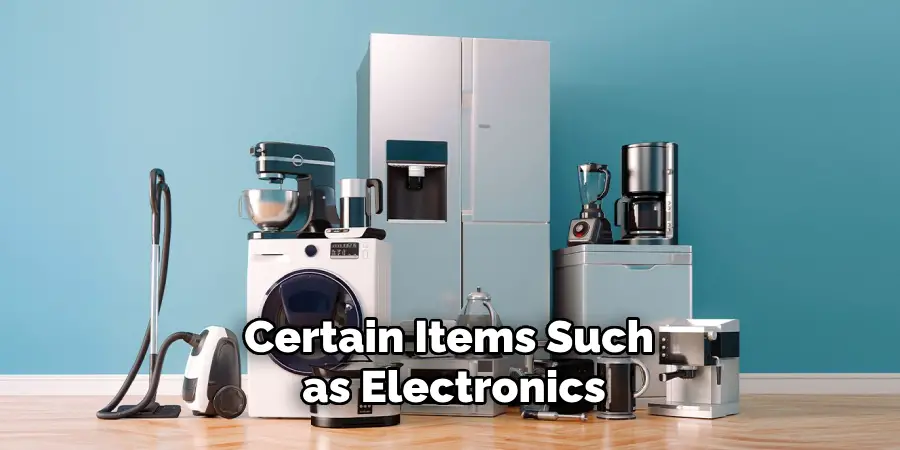
Certain items, such as electronics, wooden furniture, and important documents, may require a climate-controlled storage unit to prevent damage from extreme temperatures or humidity.
Investing in a climate-controlled unit can help maintain the condition of your sensitive belongings over the long term.
Use Quality Packing Materials
Purchase high-quality packing materials, including sturdy boxes, bubble wrap, and packing tape, to ensure your items are well-protected during both storage and transport. Proper packing materials can prevent damage from impacts, moisture, and other environmental factors.
Label Everything
Make sure to label all boxes and containers clearly. This not only helps with organization but also makes it easier to find specific items when you need them. Include a brief description of the contents and the room they belong to for quick identification.
Take Inventory
Create a detailed inventory list of all the items you’re storing. This can be a simple handwritten list, a spreadsheet, or even a digital app designed for inventory management.
Having a comprehensive list will help you keep track of your belongings and provide valuable information in case of any incidents.
Optimize Space
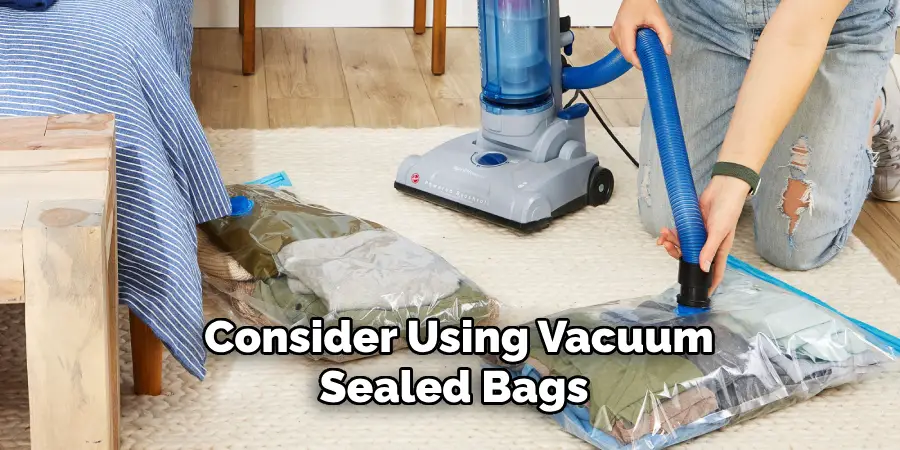
Make the best use of your storage unit by taking advantage of vertical space and minimizing dead space. Stack items strategically and consider using vacuum-sealed bags for clothing and linens to reduce bulk.
Protect Against Pests
Even in well-maintained facilities, pests can sometimes be a concern. Use pest deterrents, such as mothballs or moisture absorbers, and ensure that all food items are removed from the storage unit. Sealing items in plastic containers can also provide an extra layer of protection.
Regularly Visit Your Unit
Make periodic visits to your storage unit to check on its condition and the status of your belongings. Regular visits allow you to spot any potential issues early on, such as water leaks, pest infestations, or unauthorized access.
By implementing these additional tips, you can further enhance the security and condition of your stored items, ensuring they remain in optimal condition for as long as needed.
Legal and Regulatory Considerations
When using a storage unit, it’s important to be aware of the legal and regulatory considerations that may impact your storage experience. Understanding and complying with these regulations can help prevent legal issues and ensure the safety and security of your stored items.
Understand Your Lease Agreement
Before renting a storage unit, carefully review the lease agreement provided by the storage facility. The lease outlines the terms and conditions of your rental, including payment schedules, access rights, and rules regarding prohibited items.
Make sure you understand all the clauses, and if any terms are unclear, seek clarification from the facility management. Signing the agreement indicates your acceptance of these terms, so it’s essential to be fully informed.
Prohibited Items
Most storage facilities have strict regulations about what can and cannot be stored in their units. Commonly prohibited items include hazardous materials, explosives, firearms, perishables, and any illegal goods.
Storing prohibited items can not only result in the termination of your rental agreement but can also lead to legal consequences. Always confirm with the storage facility if you’re unsure about specific items.
Insurance Requirements
Many storage facilities require tenants to have insurance coverage for their stored belongings. This can either be through an existing homeowner’s or renter’s insurance policy or a specialized storage insurance plan.
Insurance provides financial protection in case of damage, theft, or other unforeseen events. Verify the storage facility’s insurance requirements and ensure you have adequate coverage before moving your items into the unit.
Access and Security Policies
Familiarize yourself with the storage facility’s access and security policies. These policies govern who can access your unit and when, as well as the security measures in place to protect your belongings.
Ensure that any individuals you authorize to access your unit understand and comply with these policies. Additionally, be aware of the facility’s operating hours and any procedures for after-hours access.
Late Payment and Lien Laws
Be aware of the facility’s policies regarding late payments and the potential consequences. Many storage facilities have strict timelines for rent payments, and failure to pay on time can lead to late fees or the eventual auctioning of your stored items.
Familiarize yourself with the local lien laws, which govern how storage facilities can handle delinquent accounts. Understanding these laws will help you avoid losing your belongings due to non-payment.

By staying informed about these legal and regulatory considerations, you can ensure a smooth and trouble-free storage experience. Compliance with the storage facility’s rules and regulations not only protects your belongings but also fosters a positive relationship with the facility’s management.
Real-World Applications and Case Studies
Application in Business Operations
Businesses often utilize storage units to manage overflow inventory or seasonal products.
For example, retail stores frequently store extra stock in off-site storage units, allowing them to maintain a tidy store environment while still having immediate access to additional inventory. This approach helps businesses optimize their retail space, enhance customer experiences, and manage supply chain logistics more effectively.
Case studies from retail giants like Walmart and Target have shown that effective storage management can significantly reduce overhead costs and improve operational efficiency.
Residential Use Cases
Homeowners and renters commonly use storage units during significant life transitions, such as moving, downsizing, or renovating. For example, a family relocating across the country might use a storage unit to temporarily house their belongings until they settle into their new home.
Similarly, individuals undergoing home renovations can store furniture and personal items in a unit to protect them from dust, damage, and congestion. Testimonials from satisfied customers of popular storage providers like Public Storage and U-Haul suggest that access to secure, affordable storage solutions can greatly ease the stress associated with these transitions.
Student Storage Solutions

University students often face the challenge of storing their belongings during seasonal breaks, particularly if they live far from home. Storage units offer a convenient solution for storing personal items, textbooks, and dorm furniture over summer break or during study abroad programs.
For instance, companies like Collegeboxes provide specialized services for students, including pickup, storage, and delivery, ensuring a hassle-free experience. Case studies from universities across the nation highlight the increasing demand for student storage solutions and the added convenience they offer.
Disaster Relief and Recovery
In the aftermath of natural disasters, storage units can play a crucial role in recovery efforts. For example, after hurricanes or floods, storage units can provide a safe place for disaster victims to store salvaged belongings while they rebuild their homes. Organizations like the Red Cross and FEMA have partnered with storage facilities to offer temporary storage solutions for affected individuals.
Real-world examples from disaster-prone areas illustrate how timely access to storage can alleviate some of the burdens faced by those in the recovery process.
By exploring these diverse real-world applications and case studies, it becomes evident that storage units serve as vital resources across various contexts, addressing both personal and professional needs.
Frequently Asked Questions
Q1: Can I Access My Storage Unit Outside of the Facility’s Operating Hours?
Accessing your storage unit outside of the facility’s standard operating hours depends on the specific policies of the storage facility. Some storage facilities offer 24/7 access, allowing you to visit your unit at any time. Others may have restricted hours and require you to visit during designated times.
In some cases, facilities may offer after-hours access upon request, often for an additional fee. It’s important to check with your storage provider to understand their access policies and any associated costs. Always ensure you have a clear understanding of the access rules to avoid any inconvenience.
Q2: What Happens if I Fail to Pay My Storage Unit Rent on Time?
Storage facilities typically have strict timelines for rent payments, and failure to pay on time can result in late fees or even the auctioning of your belongings. Before signing a storage unit lease, make sure you understand the facility’s policies regarding late payments and any potential consequences.
Familiarizing yourself with local lien laws will also help you avoid losing your stored items due to non-payment. If possible, set up automatic payments or reminders to stay on top of payments and avoid any issues.
Conclusion
In conclusion, taking the time to properly prepare and maintain your storage unit is essential for safeguarding your valuables. By following the outlined steps on how to lock storage unit—cleaning the unit, organizing items strategically, utilizing shelving and pallets, covering your belongings, ensuring the lock is always secured,
checking the lock regularly, keeping spare keys secure, and maintaining communication with facility management—you can ensure that your items remain safe and in good condition throughout their storage period. Remember, a little effort and diligence go a long way in preventing potential issues and ensuring a smooth, worry-free storage experience. Happy storing!
